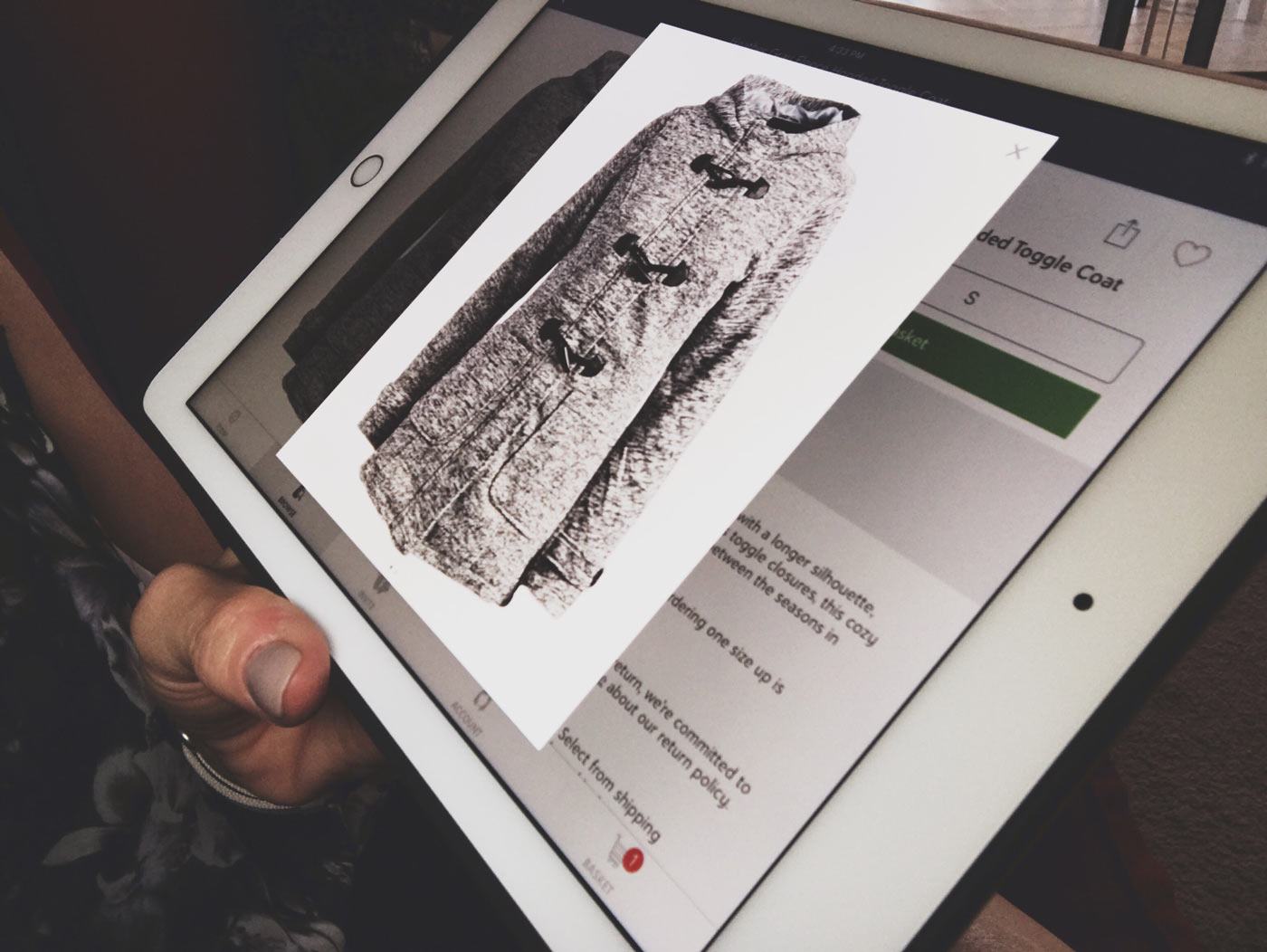Welcome to The Merchant Life, for retailers and retail enthusiasts wanting the insider perspective of all things retail.
Now let’s talk shop.
We got a real hot mama of a newsletter this week.
We circle back to customer loyalty in retail and put the focus on all things related to data.
- What is the value of customer data?
- What types of data can be used to improve loyalty?
- How can retailers improve their loyalty efforts using data?
- Can retailers go too far with data?
Check out our thoughts on the Trifecta of Retail, Customer Data, and Loyalty.
Kick Ass and Take Names Online:
Folks in the retail space might be familiar with this company:
We discovered this company when the news broke that Pier 1 Imports was filing bankruptcy and selling off merchandise in stores. At the same time, REV was stepping up to the plate to purchase the retailer.
Specifically: the trademark name, its data, including customer lists, and other assets related to e-commerce. The price tag came out to $31 million for the purchase.
Turns out REV is in the business of buying distressed retail brand names and taking them online. Familiar names like RadioShack and Modell’s Sport Goods are part of their portfolio.
Doesn’t take too much digging to see who runs the firm – one of the co-founders is this internet legend:
That’s right, Tai Lopez, social media influencer of “read 1 book a day = drive a Lambo” fame. Tai and his partner, Alex Mehr, are in the business of taking retail duds and converting them to e-commerce studs.
But notice that brick and mortar is not part of deal, although physical stores can be brought back in the future, e-commerce is the path forward.
Why bother to do this?
Simple. The data.
In further examples below, the acquisition of customer data allows for growth and expansion much more rapidly.
ASOS bought Topshop for £265M ($364M USD). It had everything to do with Topshop’s existing relationship with Nordstrom in addition to its customer data.
Boohoo bought Debenhams for £55M ($75.4M USD), with no interest in its physical stores whatsoever. The acquisition had everything to do with the high street retailer’s customer database and its market share in beauty and skincare.
TL;DR – retailers take note, the money is in the data.
Data is Like Rocket Fuel for Growth
Like throwing gas onto the fire, throwing data into a loyalty program can accelerate growth.
Frequent flyer programs do this very well (especially for driving mileage sales from its members1) and are extremely profitable – the programs are often valued far more compared to the airline itself. An example is American Airlines who, only a few days ago, put the AAdvantage program up as collateral to secure a subsidized loan from the U.S. government.
Value of the loan? $7.5 billion.
Appraised value of the loyalty program? Anywhere between $18 – $30 billion.2
Further, McKinsey has reported on the effects of customer analytics on corporate performance back in 2014. Their report demonstrates significant impact in areas such as sales growth, customer profitability and customer retention. Also, there is a clear consensus that as data maturity increases in an organization, the data makes a stronger contribution to performance.
In contrast, retail isn’t as imaginative as it could be with loyalty. While working with small/medium retailers, we found offers of tiered reward structures with a 1-2% cash giveback to customers were most used, depending on how much they spent. If this was to be successful, the marketing efforts behind the program had to be compelling, highly targeted and powered by the data (if any) that was being collected.
If retail wants to add to their growth and get more creative with loyalty, then the use of data is necessary.
Consider the types of data available at your disposal:
- Transactional Data – This includes basket size for transactions, what people are buying, where they buy, when they buy and how often.
- Operational Data – Sets of data gathered from the day to day operations of the business. Think store volumes for physical locations as a function of the time of day or days of the week examples.
- Engagement/Behavioural Data – This describes how a customer engages with a business. Think of things like website activity, email opens and click throughs, cart abandonment, location data, response to paid social ads and so forth.
There is also additional third-party data that a retailer can have access to either through brand partnerships, paying for it or finding it in the public domain.
Assembling the Puzzle
Although it’s powerful to have the data discussed above, the trouble is that multiple sources of data provides the challenge of the data being in different places.
It’s difficult to have a unique, singular view of a customer.
Why is that?
Lia Grimberg, Former Senior Director, Loyalty and Analytics at Loblaw Companies Limited, says “It’s because a retailer has multiple records of you. Every time you hit the website, you shop in a physical store, earn/redeem points, you interact with my brand a lot. If I don’t have a single view of you then I have multiple you’s in my system.”
Without that consolidated, singular view, in principle, I could exist as several different people in the data sets for a retailer. Moreover, these multiple layers of data may exist in a fragmented manner across the company and bringing them together is a challenge.
Lia adds: “If I can bring all the data together, then I can make better decisions. When I see you as one individual across all the channels that you are interacting with me, I can engage in predictive and prescriptive analytics.”
Predictive analytics allows a retailer to extrapolate and make reasonable assumptions – for example, if you come into a grocery store every week for the past four weeks on a Saturday morning and spend $150, it’s safe to assume that you will do the same going forward.
Prescriptive analytics would allow for a retailer to determine a course of action – like make recommendations to a customer to entice them to spend more during that Saturday visit or to suggest coming in on another day of the week.
The success of a loyalty program depends on the ability of the program to change consumer behaviour. Using data and leaning into predictive and prescriptive analytics gives retailers the ability to drive those changes in behaviour.
The pieces to the puzzle is the data.
Financial Engagement vs. Emotional Engagement
There’s a big difference between the two.
Abandoned cart offers, weekly sales in a flyer, newsletter welcome offers using that spare email address, free/expedited shipping and so on. are some examples but not competitive differentiators.
This is engagement on a purely financial level and why discounts on their own are not a substantial competitive difference – because anyone and everyone offers these.
Emotional engagement is more encompassing – it’s about the relationship between customer and brand. This is truly unique to the brand. For example, the customer of a brand like Nike will not be exactly the same as that of Adidas or Reebok.
Data provides the foundation for this, especially if retailers can make the push towards a more complete view of the customer. With this deeper view, the customer experience can be personalized.
Although we can’t accurately quantify emotional engagement, we can approximate it.
For example, the 2020 Bond Brand Loyalty report published these statistics:
- The customer experience drives 74% of engagement with a loyalty program and personal relevance is of increased importance in 2020.
- Members who receive relevant offers that become more relevant over time are 8 times more likely to go out of their way to use them.
- Loyalty programs that achieve high levels of personalization see considerable lift in key outcomes such as Say, Stay and Spend (5.8x, 4.8x and 6.4x lift respectively).
Another way of looking at emotional engagement is provided by Grimburg stating that “Loyalty is about forsaking all others. If a customer is loyal, they will be less promotionally sensitive to your competitors offers and more promotionally sensitive to yours.”
Personalized experiences will drive emotional engagement, making your customers more loyal to your brand.
What Can Retailers Do?
At this point, it’s pretty clear that there is significant value in having a loyal customer base. Not only that, being data-driven in securing that loyalty will pay dividends down the road.
The question becomes what exactly can retailers do to help drive their loyalty efforts?
First, retailers have to recognize that their proprietary data is their main competitive advantage; making use of the data to understand customers better is essential.
The data should also be accessible, in one place, where clear insights can be swiftly drawn and utilized.
Then, they need to start with the end result in mind, or as Grimberg says:
“There needs to be alignment throughout the organization, particularly at the head, as to what is the single-minded KPI that the loyalty program needs to drive.”
Clearly define the value proposition of the loyalty program and ask yourself:
- What are the assets available to the company which can be offered to customers?
- What is your understanding the objectives?
- Do you have clarity around the best customers and next to best customers regarding what they want from the program, and what will drive their behaviour?
Once your value proposition is defined and you’ve determined who your customer is and what they want, defining a loyalty program that drives the aligned KPI is fairly simple.
Data-driven insights and decision making will give you that clarity.
If retailers are able to come closer to a holistic view of the customer, better decisions will be made across the organization.
From marketing to pricing optimization and assortment planning, data-driven decision making will give you the insights needed to give the customer what they want, how they want it, and when they want it.
Avoid ‘gut-feeling’ decision making.
Utilize the data.
The Other Side of the Fence
To wrap up this volume of the newsletter, we wanted to briefly touch on two points, both relevant in a broader context when discussing the use of data.
Creepy or Genius?
Target made headlines in 2012 with a story of how the retailer could figure out if a teen girl was pregnant before her father did. Target statistician, Andrew Pole, was interviewed as part of a New York Times article.
Pole revealed that based on the purchase behaviour of women of 25 specific products, he could assign a “pregnancy prediction score.” Pole could also estimate the delivery date of the baby within a small window, allowing Target to send out very specifically timed and relevant coupons.
- Privacy advocates would say (and did say) it’s time to pay for cash for everything when visiting a retailer.
- Data scientists would likely rejoice as to the accuracy of the analysis and predictions.
- Retailers would be fairly excited if these insights converted into a return on investment.
Customers crave personalization from brands and as such, brands have to get to know customers better.
The data provides the means to do just that.
Customers don’t want to just go ahead and give up their data; there are legitimate concerns given reports of data breaches in the news and what big tech is doing with data. Plus, customers don’t want to be inundated with messages from retailers.
Here’s the thing –
First, if there is a sufficient exchange of value, customers are willing to provide their information.
Second, customers don’t want to be inundated with irrelevant messages; personalized messaging is welcomed.
No discussion about the use of data would be complete without discussing these issues and retailers should keep these in mind.
Marketing responsibly is the key – only ask for the data that is planned on being used and nothing more.
Limitations
There is something to be said when we spend more time in the data pool versus spending it with the people who are the actual data source.
Sales management is an interesting parallel here.
Can a manager be effective by staring at Salesforce for most of the day, burying their heads in reporting and analytics?
Can a store manager really have a view of who is shopping the store if they are sitting in their office reading emails from corporate rather than engaging with the customers and sales teams?
Sales is a human to human interaction and there is tremendous value to be had in shadowing the sales team, observing the interaction and coaching accordingly.
In sports, there is a surge of professional teams making use of analytics to fuel decision making – sometimes to their own detriment.
In game six of the 2020 World Series, Blake Snell of the Tampa Bay Rays struck out nine batters on his way to his first 16 outs. He kept the L.A. Dodgers scoreless through six innings and held up the 1-0 lead that Tampa secured in the first inning.
Tampa’s manager, Kevin Cash, then pulled Snell from the game and replaced him with reliever Nick Anderson. The decision was driven by data which told Cash that historically pitchers are not as effective facing opposing batters for the third time in a game.
The result? Los Angeles was able to recover from their cold start, score three runs and win game 6 to claim the World Series title.3
Data is extremely powerful in that it tells us the who, what, where, when and how.
We would argue that since human behaviour is filled with nuance, there may be things that even the best data sheet might fail to capture.
At some point, data has its limits.








